Elbows off the table, sit correctly, and don’t slurp your food! Some of these more common practices of etiquette may just be the opposite of what you should do when it comes to Japanese etiquette.
As you may know, Japanese culture is steeped in tradition and history from greetings to the placement of chopsticks. While many may not be familiar with these customs, you will be able to set yourself apart and be seen as the most respectful person at your next Japanese dinner.
In this blog, we will go over:
- Japanese greetings
- Proper seating
- 8 key dining tips for Japanese etiquette
Let’s get started so we can get to eating!
The Art of Greeting
In Japanese etiquette, greetings hold profound significance, reflecting respect, hierarchy, and warmth.
What to Say
When it comes to the initial greeting, there are many different greetings based on time of day and how well you know the other party. Here are a few common, formal Japanese greetings:
Konnichiwa (kon-nee-chee-wah) – Hello/Good Afternoon
Ohayou gozaimasu (oh-hi-oh go-zai-mas) – Good Morning
Konbanwa (kon-bahn-wah) – Good Evening
O-genki desu ka? – (oh-gain-kee des-kah) – How are you?
Genki desu (gain-kee des) – I’m fine
Arigatou (ar-ree-gah-toh) – Thank you
Since these are the more formal greetings, use them when you are conducting business dinners or you do not know the other party intimately.
As for parties where you are closer and more familiar, less formal greetings are perfectly acceptable. Here are a few examples:
Nannika atta (nah-nee-kah-tah) – What’s up?
Kawatta koto aru (ka-wah-tah koto- ar-ew) – What’s new?
Dou shiteru (doh-stair-ew) – How is everything?
Using these Japanese etiquette greetings to start your dining experience will be sure to impress your guests and friends!
Bowing
Bowing is an essential part of Japanese etiquette and culture. It is a sign of either respect or gratitude towards someone. This is an important lesson that many Japanese people learn when they are children.
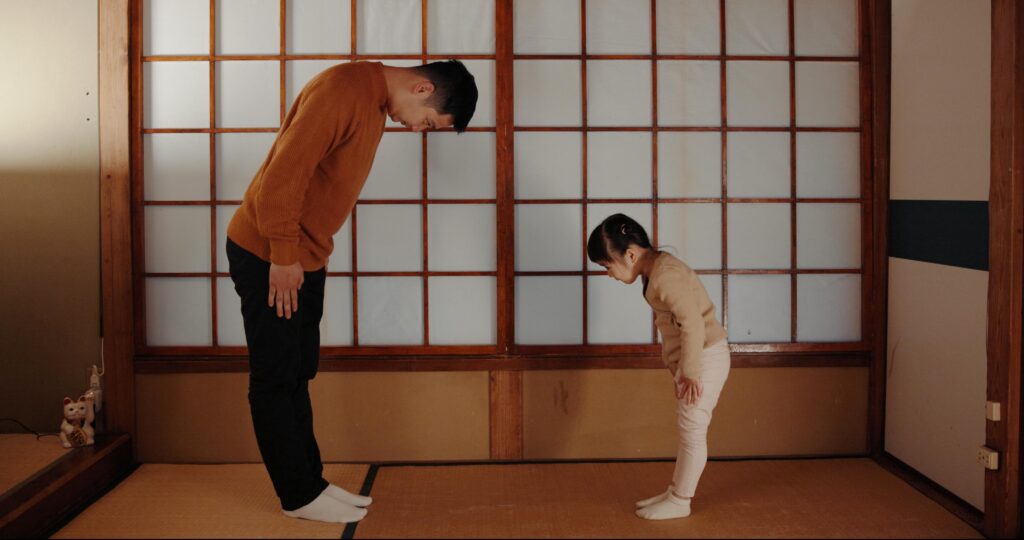
Primarily, bowing is traditionally done one of two ways:
Nodding the Head: Sometimes a smaller bow is called for and a simple nodding down of the head will suffice.
From the Waist: When needing to be more respectful, such as a server to their patron, a bow at the waist is more common.
There is also a manner to how deep the bow can go and what that expresses towards other people. A lighter bow is common Japanese etiquette among those you have a connection with. A deeper bow is meant to express high gratitude and is more reserved for formal situations.
Seating Arrangements
Believe it or not, chairs were not normal for dining in Japanese etiquette until recently.
Japanese culture dictates that guests sit on the floor while dining. Moreover, guests typically gather around low dining tables atop tatami mats, woven from reeds. In Japan, this creates an intimate dining experience.
How to Sit
The posture adopted during dining reflects the formality of the occasion.
For formal dining engagements, men and women tend to kneel down while at the table with their feet placed underneath them. This is called seiza (see-za). This position is believed to correct posture which contributes to a longer life.
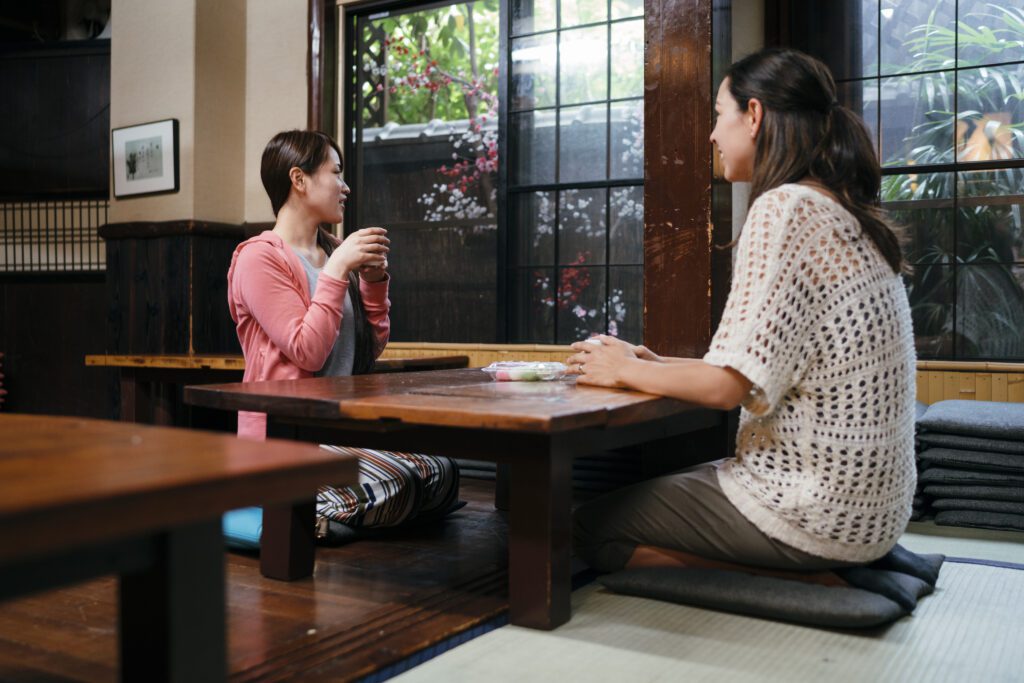
Conversely, informal gatherings permit more relaxed seating postures. Men may opt for a cross-legged or “pretzel-style” position, while women commonly sit with both feet to one side of their body.
Where to Sit
After the how, it’s time to discuss the where.
In Japanese etiquette, the seat of honor is called kamiza (ka-me-za). This spot is reserved for the person who is of the highest rank or celebrated person of the meal. Commonly, this seat is reserved as the seat farthest from the door.
However, this seat changes if there is a tokonoma in the room (a recessed space). In this case, the kamiza is moved to the center of the table, with their back towards the tokonoma, and other guests sit on either side of them.
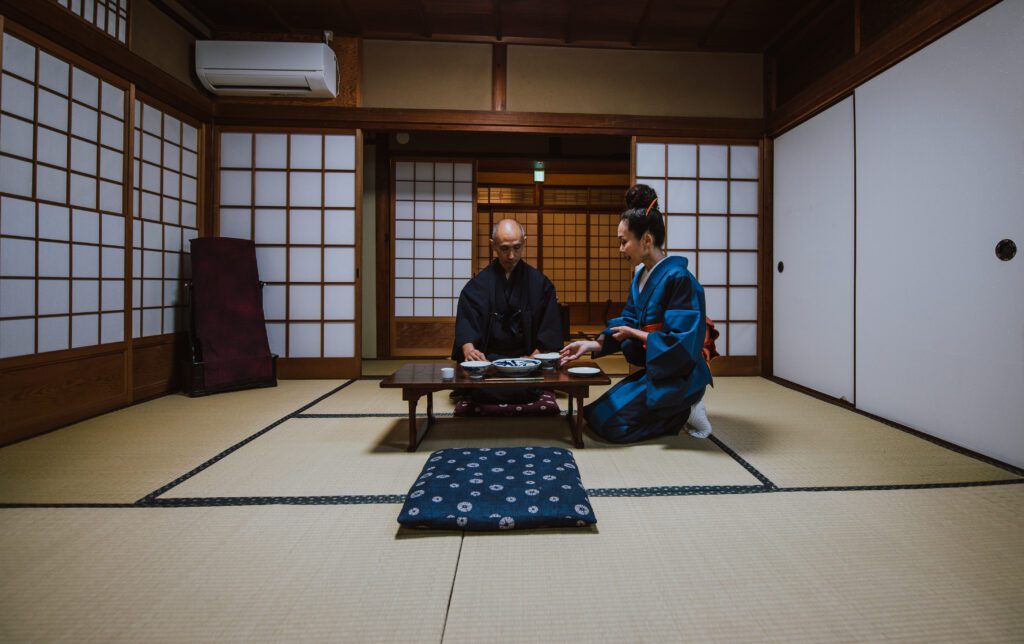
8 Japanese Etiquette Tips for Dining
You know how to greet everyone at your meal. You know how and where to sit. By now you’re wondering when do you eat? Once the meal has begun, here are the eight japanese etiquette tips to follow:
1.Never rest chopsticks on your bowl
Placing chopsticks on your bowl signifies that you’re finished eating, which could be perceived as disrespectful. Crossing them is particularly taboo as it evokes imagery associated with funerals, a solemn reminder in Japanese culture.
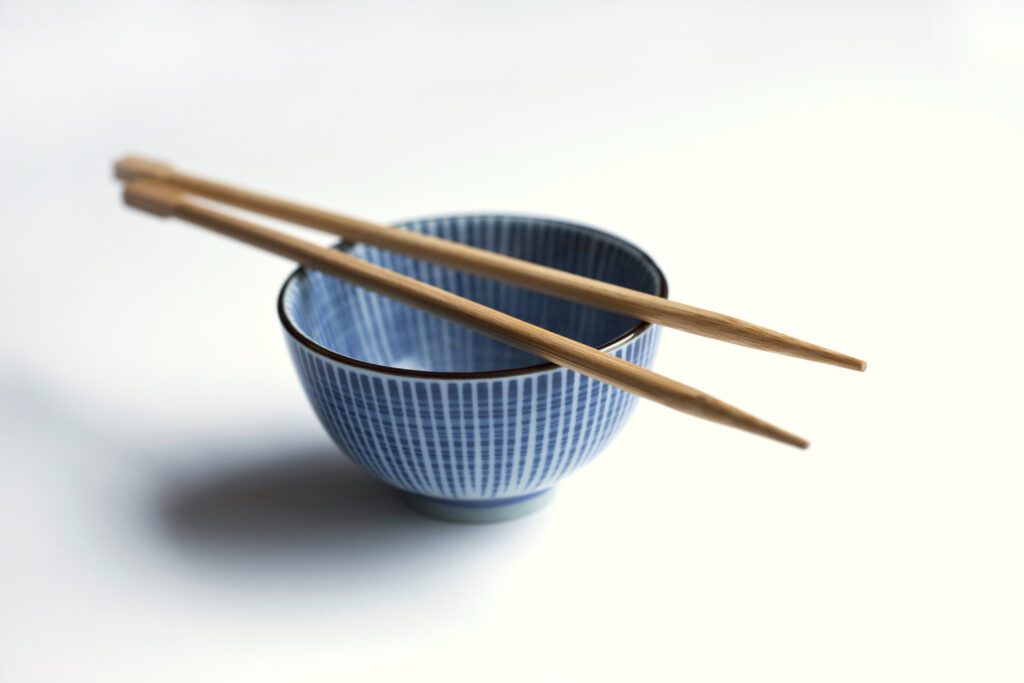
To avoid scrutiny for chopstick placement, opt for chopstick holders or the paper wrapper they came in as a resting place.
2.Never raise food above your mouth
In Japanese dining etiquette, it’s considered impolite to raise food above mouth level while eating. This gesture maintains decorum and avoids potential messiness.
It’s customary to trust the food’s quality without the need for close inspection.
3.Don’t try to catch falling food
Surprisingly, while this may seem like good manners, it is not in Japanese etiquette.
If food is falling off the table, or from your mouth, it is common to just let it fall.
4.Slurping is a sign of appreciation
Remember how your mother taught you it’s not polite to slurp your food? Well, slurp away!
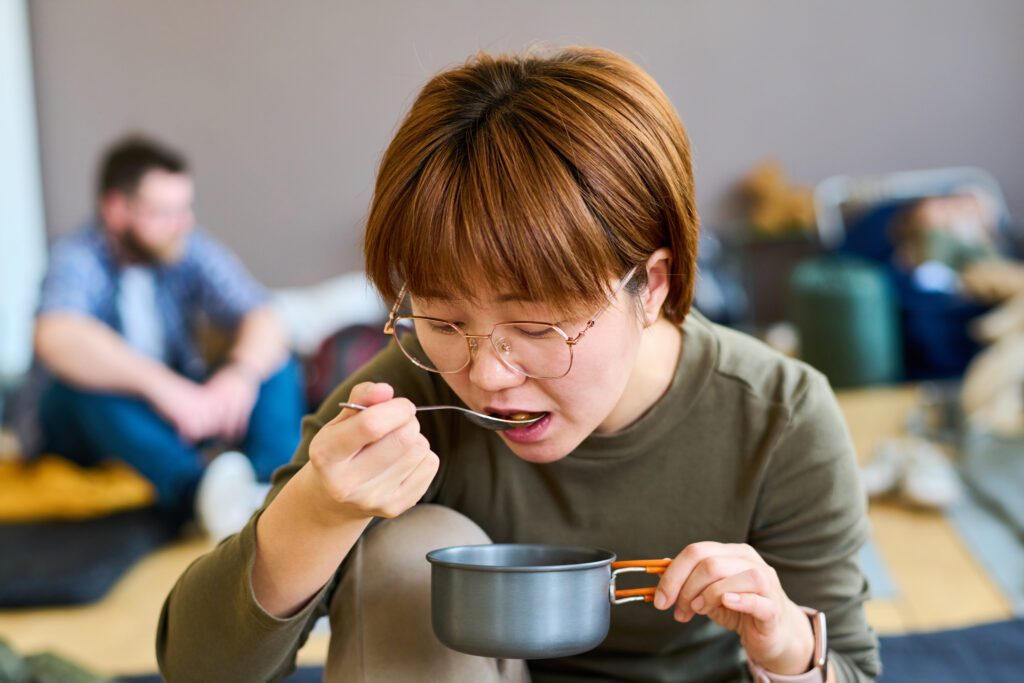
Unlike Western customs where slurping may be frowned upon, in Japanese culture, it’s a gesture of deep appreciation for the meal. Also, it helps to cool down your food and enhance the overall flavors.
5.Place dishes and utensils in the same position as when you started eating
After finishing a meal, it’s customary to return dishes and utensils to their original positions. This act reflects respect for the dining environment and demonstrates consideration for the next diner.
The process includes placing lids back on any dishes they came with and putting chopsticks
6.Eat soup with chopsticks
You’re probably thinking you’d have better luck eating your soup with a fork. While you may be right, soup is eaten with chopsticks in Japan.
When eating soup with chopsticks, patrons will use them to remove the solid chunks of the soup first. Tofu, meat, vegetables, and anything else that can be picked up by chopsticks should be done as such.
Once all of the solid food is gone, you will then lift the soup to your mouth and drink the broth as you would tea.
7.Don’t stick chopsticks straight up in your food
When you need to put your chopsticks down, sticking them straight up in your food looks like an easy option. But it is not only a rude gesture, but a sign of bad luck.
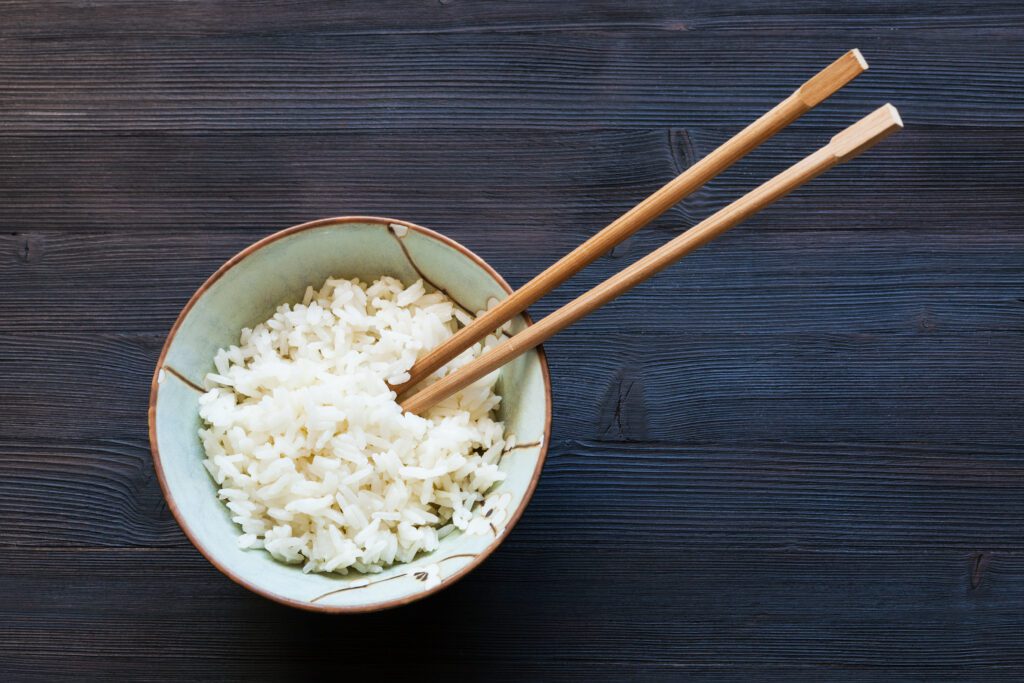
Traditionally, a bowl of rice is left at Japanese funerals with a pair of chopsticks sticking straight up. It is called tate-bashi. It is also meant as a reminder of the incense that is left burning during a funeral service.
It is commonplace that Japanese restaurants will offer you a chopstick rest to use, so opt for that option.
8.Offer gratitude for the meal
Offering gratitude is a huge deal in Japanese etiquette much like grace is said before meals in other cultures.
This is signaled by either the main guest (kamiza), family member, or wait staff makes the gesture to eat. This generally comes in one of two forms of speech:
Itadakimas – I gratefully receive
Gochisosama dashita – Thank you for the meal
Offering gratitude for the meal is important to show respect and appreciation towards those who cooked the meal, no matter their rank or class.
Practice Japanese Etiquette at Kobé
Now that you have all of the tools you need in your proverbial etiquette belt, let’s put them into practice at Kobé Japanese Steakhouse!
While we don’t have you sit on the floor, you can still practice all of the other Japanese etiquette you have learned here from slurping to the proper placement of your chopsticks. Greet our world renowned hibachi and teppanyaki chefs with proper Japanese sayings and try eating soup with your chopsticks. We promise it’s not as hard as it sounds.
Book your reservation today and show your friends, family, or coworkers the proper etiquette to enjoy a proper Japanese dinner respectfully.